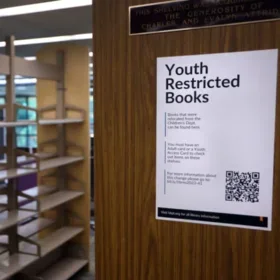By Solange Charas, Ph.D., Professor of Practice in the M.S. in Human Capital Management program
The "Great Stay" phenomenon is a puzzling and much discussed trend in which employees remain in their roles despite declining job satisfaction. What makes this trend puzzling is the rise in productivity during this time. Normally, low satisfaction leads to higher turnover and lower yield, but we’re seeing the opposite.
As Gad Levanon, chief economist at The Burning Glass Institute, explains in an essay posted on LinkedIn, the labor market has loosened despite robust economic growth and baby boomers retiring: "Over the past couple of years, robust economic growth and the steady retirement of the large Baby Boomer generation would typically be expected to tighten the labor market. Surprisingly, the opposite has occurred, with labor market conditions loosening.”
A tight labor market occurs when there are more job openings than available workers. A loose labor market, on the other hand, happens when there are more available workers than job openings. How is it that productivity is high while engagement and job satisfaction decline? In the M.S. in Human Capital Management (HCM) program, our courses prepare students to explore these dichotomies and develop successful approaches, anchored in theoretical research, to address human capital trends, such as the “Great Stay.”
Paradoxes All-Around
This paradox echoes the "Job-full Recession" of 2021-2022, when unemployment fell, contradicting traditional economic theories. According to Okun’s law, a recession typically leads to rising unemployment, but that wasn’t the case in 2021. The “Great Stay” challenges assumptions about the relationship between job satisfaction and retention. It may signal a shift in how employees view work, questioning the link between engagement and productivity.
AI’s Role in Driving Productivity
One critical factor that may be driving this paradox of high productivity despite declining satisfaction is the rise of artificial intelligence (AI) in the workplace. AI and automation technologies have been streamlining tasks, improving efficiency, and allowing employees to focus on higher-level work. These tools can often boost productivity without requiring higher levels of employee engagement or satisfaction. AI allows employees to complete more tasks in less time but doesn’t necessarily lead to a higher level of “purpose, potential, or play,” factors identified by Lindsay McGregor in Primed to Perform as sustainable drivers of high-performing work cultures. While AI may be helpful in the short term, it might also be masking underlying issues of employee dissatisfaction that could emerge soon.
Addressing the Great Stay in HR Programs
The key question remains: Why are employees staying in their jobs even as their satisfaction levels drop? Levanon suggests that uncertainty plays a significant role. With an election year approaching and an unpredictable economic climate, employees may be less willing to take the risk of changing jobs. Stability becomes more attractive in times of uncertainty, even if that stability means staying in an unsatisfying role. Additionally, the job market is softer than expected, partly due to the retirement of baby boomers. With fewer workers available, job opportunities may not seem as appealing or secure, making employees hesitant to leave their current roles.
The Role of HR in Preventing an “Attrition Avalanche”
While the “Great Stay” may offer the short-term benefits of higher retention and productivity, the risks are significant. Dissatisfaction left unchecked could lead to an "attrition avalanche" once market conditions shift. HR professionals must prioritize employee engagement now, even if retention appears stable. Some areas to consider include employee listening and recognition, wellness, work-life balance, learning and development, and intrinsic/extrinsic rewards offerings.
Don’t Be Lulled into a False Sense of Security
The “Great Stay” provides short-term stability and productivity, but it’s crucial not to mistake this for long-term success. The risk of an “attrition avalanche” looms large, and once market conditions improve and the current paradox unravels, employers could see a surge in departures that disrupts operations and drives up overall human capital costs.
Solange Charas is a professor of practice in the HCM program, focusing on transforming human capital into strategic value with data-driven solutions.
About the Program
The Columbia University M.S. in Human Capital Management program prepares graduates to be world-class HCM strategists able to address changing needs in building and motivating talented, engaged workforces in the private, public, academic, and not-for-profit sectors. The program is available part-time, full-time, on-campus, and online.



